


The Hohenburg (previously also called Hochenburg) is a ruined medieval castle near Lenggries in Bavaria, Germany. Once a dominating centre of power in the region, it was destroyed by fire on 21 July 1717.



The Hohenburg (previously also called Hochenburg) is a ruined medieval castle near Lenggries in Bavaria, Germany. Once a dominating centre of power in the region, it was destroyed by fire on 21 July 1717.
The castle was built on a crag overlooking the Hirschbach; the first recorded mention of it dates to around 1100. For centuries it was the major centre of power in the Isarwinkel, the region along the Isar between Bad Tölz and Wallgau. The community of log-rafters and craftsmen which grew up below it became Lenggries.
The original owners of the Hohenburg were the lords of Thann. Late in the 12th century it came into the possession of the lords of Tölz, and in 1262 passed to the Wittelsbachs. From 1294 it was in the possession of the lords of Egling, then from 1396 of the lords of Maxlrain, who substantially rebuilt and enlarged it in 1410–20. In 1522 it passed to the House of Schellenberg. Finally in 1566 Dionys von Schellenberg sold the castle and fief to his nephew Hanns Paul Herwarth, and they remained in his line until 1800.
Until the mid-16th century it remained a defensive castle; there is a legend of a tunnel under the Isar connecting it with the Neuburg on the Brauneck. [1] From 1570 on, rebuilding changed its appearance and gave it characteristics of an aristocratic residence.
In 1705 the castle and the town were in the centre of the Bavarian People's Uprising against Austrian occupation; the first resistance was organised there. The uprising ended with Sendling's Night of Murder on Christmas Day in 1705 and the Battle of Aidenbach in January 1706.
During the War of the Spanish Succession, the castle was occupied by Austrian troops and on 21 July 1707 a fire of unexplained origins spread to the entire castle within an hour and completely destroyed it. According to Judge Mayr's report to Count Herwarth, the fire broke out at about 10 o'clock in the Great Hall, which was being used as a barracks, and the hussars set up a hue and cry but evacuated the castle rather than attempt to fight it. Their lieutenant objected to the suggestion that his men had caused the fire through drunkenness or carelessness and blamed a dirty, blocked fireplace in the hall; however, several witnesses later said the fireplace had not been the source of the fire.
The castle was then mostly demolished, the stones being reused for the parish church and the new Schloss Hohenburg, which was built approximately 300 metres (330 yd) to the west. Trees that have grown up on the site have further broken up what remains.
The site is still heavily wooded. Part of a tower, several ramparts and ruined walls and a well shaft remain of the castle. During the 20th century Romantics and preservationists became aware of the ruin and sought to prevent it from decaying further. A Burgverein—castle association—was founded in 2003, and organised a permanent exhibit at the Lenggries museum that opened in 2007 on the occasion of the 300th anniversary of the castle's destruction. In 2004–06, geodesy experts from the University of the German Federal Armed Forces at Neubiberg near Munich surveyed the site and the ruins with lasers, making it the first castle in Bavaria of which an accurate virtual model exists; this is the centrepiece of the museum display. [2] [3] The association organised an associated clean-up and cleared 24 trees; the once overgrown path up to the castle is now clear, [1] and in 2014 informational signs with photographs were placed along it and a view cleared through the trees from the first stop. [4]
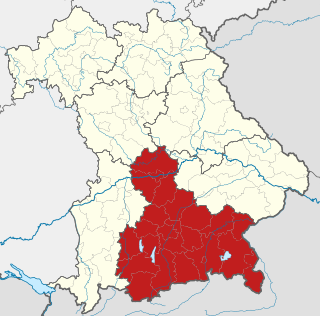
Upper Bavaria is one of the seven administrative districts of Bavaria, Germany.
Bad Tölz-Wolfratshausen is a Landkreis (district) in Bavaria, Germany. It is bounded by Austria and the districts of Garmisch-Partenkirchen, Weilheim-Schongau, Starnberg, Munich and Miesbach.
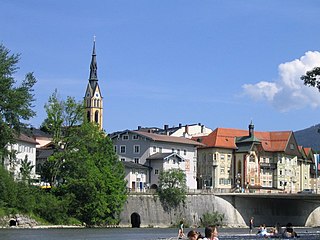
Bad Tölz is a town in Bavaria, Germany and the administrative center of the Bad Tölz-Wolfratshausen district.

The Hochburg is a castle ruin situated between the city of Emmendingen and the village of Sexau in the region of Baden, located in the southwest of Germany. It was presumably built in the 11th century and was originally known as castle Hachberg. The line of nobles known as the Margraves of Baden-Hachberg most likely derive their name from this castle and before it was razed by the French it was the second largest fortification in Baden.

Lenggries is a municipality in Bavaria, Germany. Lenggries is the center of the Isarwinkel, the region along the Isar between Bad Tölz and Wallgau. The town has about 9,500 inhabitants. By area, it is the largest rural municipality ("Gemeinde") in what was formerly West Germany, and the 7th-largest overall.
Hohenburg may refer to:

The Hardenburg on the eastern edge of the Palatinate Forest near the Rhineland-Palatinate town of Bad Dürkheim is even as a ruin one of the mightiest castles of Palatinate.
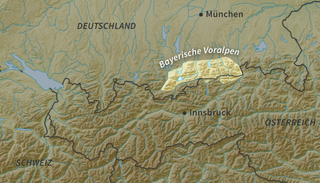
The Bavarian Prealps are a mountain range within the Northern Limestone Alps in south Germany. They include the Bavarian Prealp region between the river Loisach to the west and the river Inn to the east; the range is about 80 kilometres (50 mi) long and 20–30 kilometres (12–19 mi) wide. The term is not defined politically, but alpine-geographically because small areas of the Bavarian Prealps lie in Tyrol.
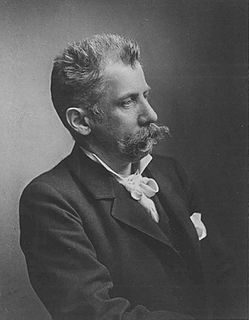
Gabriel von Seidl was a German architect and a representative of the historicist style of architecture.
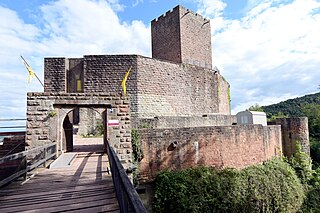
Landeck Castle is a ruined hill castle southwest of Landau, near Klingenmünster in the county of Südliche Weinstraße in the German state of Rhineland-Palatinate.

The ruins of Werdenfels Castle stand about 80 metres above the Loisach valley between Garmisch and Farchant in the county of Garmisch-Partenkirchen in Upper Bavaria. The spur castle was used until 1632 as the administrative centre of the County of Werdenfels, but began to fall into disrepair thereafter.

Grenzau Castle is a ruined spur castle at 250 m above sea level (NN) near Höhr-Grenzhausen in the county of Westerwaldkreis in the state of Rhineland-Palatinate. It is the only castle in Germany with a triangular bergfried.
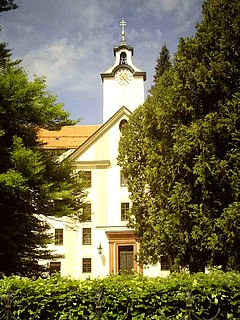
Schloss Hohenburg is a Baroque schloss (palace) in Lenggries, Bavaria, Germany.
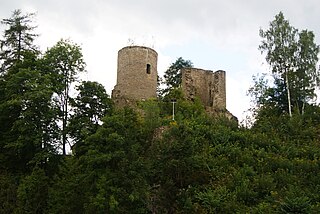
Lauterstein Castle, in German Burg Lauterstein, also called Burgruine Niederlauterstein, is a medieval castle in Niederlauterstein, town of Marienberg, Erzgebirgskreis, Saxony. It has been a ruin since the Thirty Years' War.
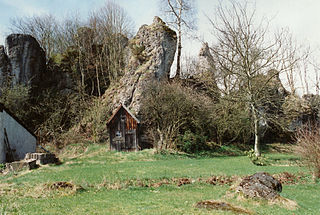
The burgstall or site of Bieberbach Castle is a ruined mediaeval spur castle situated at a height of 530 m above sea level (NN) on a rock formation in the southern part of the parish of Bieberbach, in the market municipality of Egloffstein in the county of Forchheim in the German state of Bavaria.
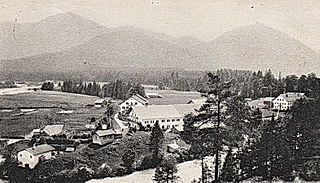
Fall is, or was respectively, a small village (Kirchdorf) in the Lenggries municipality in Landkreis Bad Tölz-Wolfratshausen, Upper Bavaria, Germany. It is located on an peninsula of Lake Sylvenstein.

The ruins of Ramstein Castle stand on a 182-metre-high, Bunter sandstone rock on the edge of the Meulenwald forest in the lower Kyll valley near Kordel in the German state of Rhineland-Palatinate.

Donaustauf Castle is a ruined hill castle located at a height of 424 m above sea level (NN) on a hill spur overlooking the River Danube by the market village of Donaustauf in the Upper Palatine county of Regensburg in the south German state of Bavaria. Donaustauf grew up during the Middle Ages under the protection of the mighty fortifications of the castle.

The Hohenburg, also called Homburg Castle or Fortress Hohenburg, is a ruined castle located Homburg in the Saarpfalz district in Saarland, Germany. It stands atop the 325 metres (1,066 ft)-high Schlossberg above the Schlossberg Caves (Schlossberghöhlen).
Coordinates: 47°40′23.05″N11°35′27.57″E / 47.6730694°N 11.5909917°E